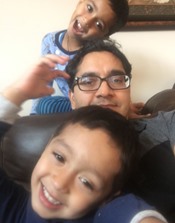Program Information
Linac-Based Stereotactic Radiosurgery (SRS) in the Treatment of Trigeminal Neuralgia: Detailed Description of SRS Procedural Technique and Reported Clinical Outcomes
D Pokhrel*, S Sood , R Badkul , H Jiang , T Stepp , P Camarata , F Wang , University of Kansas Hospital, Kansas City, KS
Presentations
SU-F-T-647 (Sunday, July 31, 2016) 3:00 PM - 6:00 PM Room: Exhibit Hall
Purpose:SRS is an effective non-invasive alternative treatment modality with minimal-toxicity used to treat patients with medically/surgically refractory trigeminal neuralgia root(TNR) or those who may not tolerate surgical intervention. We present our linac-based SRS procedure for TNR treatment and simultaneously report our clinical outcomes.
Methods:Twenty-eight TNR-patients treated with frame-based SRS at our institution(2009-2015)with a single-fraction point-dose of 60-80Gy to TNR were included in this IRB-approved study. Experienced neurosurgeon and radiation oncologist delineated the TNR on 1.0mm thin 3D-FIESTA-MRI that was co-registered with 0.7mm thin planning-CT. Treatment plans were generated in iPlan(BrainLAB)with a 4-mm diameter cone using 7-9 arcs with differential-weighting for Novalis-TX 6MV-SRS(1000MU/min)beam and optimized to minimize brainstem dose. Winston-Lutz test was performed before each treatment delivery with sub-millimeter isocenter accuracy. Quality assurance of frame placement was maintained by helmet-bobble-measurement before simulation-CT and before patient setup at treatment couch. OBI-CBCT scan was performed for patient setup verification without applying shifts. On clinical follow up,treatment response was assessed using Barrow Neurological Institute Pain Intensity Score(BNI-score:I-V).
Results:26/28 TNR-patients(16-males/10-females)who were treated with following single-fraction point-dose to isocenter: 80Gy(n=22),75Gy(n=1),70Gy(n=2)and 60Gy(n=1,re-treatment)were followed up. Median follow-up interval was 8.5-months(ranged:1-48.5months).Median age was 70-yr(ranged:43-93-yr).Right/left TNR ratio was 15/11. Delivered total # of average MUs was 19034±1204.Average beam-on-time:19.0±1.3min. Brainstem max-dose and dose to 0.5cc were 13.3±2.4Gy(ranged:8.1-16.5Gy)and 3.6±0.4Gy(ranged:3.0-4.9Gy).On average, max-dose to optic-apparatus was ≤1.2Gy. Mean value of max-dose to eyes/lens was 0.26Gy/0.11Gy. Overall, 20-patients(77%)responded to treatment:5(19%)achieved complete pain relief without medication(BNI-score:I); 5(19%)had no-pain,decreased medication(BNI-score:II); 2(7.7%)had no-pain, but, continued medication(BNI-score:IIIA), and 8(30.8%)had pain that was well controlled by medication(BNI-score: IIIB). Six-patients(23.0%) did not respond to treatment(BNI-score:IV-V). Neither cranial nerve deficit nor radio-necrosis of temporal lobe was clinically observed.
Conclusion:Linac-based SRS for medically/surgically refractory TNR provided an effective treatment option for pain resolution/control with very minimal if any normal tissue toxicity. Longer follow up of these patients is anticipated/needed to confirm our observations.
Contact Email:

